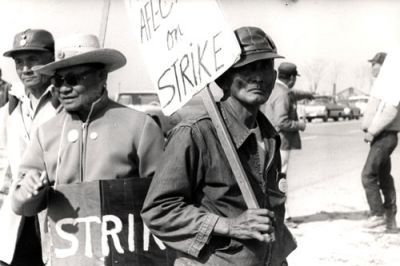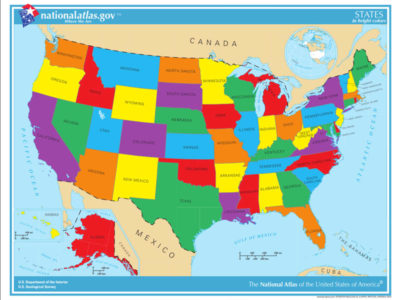Governors Present Bold Vision for Investing in a New Forest Economy
As global leaders gather in Cali for COP16 and devastating fires continue across the Amazon, we should look to subnational groups for solutions to both the climate and biodiversity loss crisis.
The world has continued to watch as fires burn – yet again – across much of the Amazon basin. With historic droughts and ongoing lack of resources to tackle these fires and their underlying causes, they have ravaged millions of hectares of forests, communities, and wildlife habitat in Bolivia, Peru, Brazil, and beyond. These fires, often deliberately set as part of land clearing efforts for cattle or agriculture, are becoming even more intense in the face of the climate crisis and exposing millions to dangerous air pollution. Increasing fire, drought, and deforestation continue to push the region closer to a “tipping point where it can no longer survive as a rainforest.” The global implications of this – coupled with other tipping points across the world’s ecosystems – are staggering to contemplate.
Despite this, there is still great room (and need) for hope – deforestation continues to be a focus of many national and subnational governments across the tropics, with important reductions made over the last several years as I have discussed in a previous post. There is an even greater need for a rapid increase in investment in on-the-ground policies and actions across the tropics.
Global leaders are gathering this week in Cali, Colombia to advance the cause of nature protection during the 16th Conference of the Parties (COP16) to the United Nations Convention on Biological Diversity. Here, governors, Indigenous and community leaders, and their partners will continue to demonstrate leadership and vision on how to combat the climate and biodiversity crises. These often-separated crises – biodiversity, forest protection, and climate change – are increasingly (and correctly) being seen as the same challenge. Our strategies to address them must also therefore be aligned and coordinated.
Blueprint for a New Forest Economy
In the lead up to COP16, the Governors’ Climate and Forests Task Force (GCF Task Force) held its 14th Annual Meeting of members and partners in the Peruvian Amazon. From October 7-11, nearly 1,000 participants gathered in Pucallpa, Ucayali, to highlight ongoing challenges, realities, and solutions to addressing drivers of deforestation, attracting more investment into community-led enterprises and initiatives, and the urgent need for increasing the level of investment necessary to transform rural tropical economies.

One of the key outcomes of this meeting was the launch of a “Blueprint for the New Forest Economy.” This Blueprint grew out of a series of past actions of the GCF Task Force, including the launch of a $1 Billion call-to-action during last year’s climate COP (COP29 in Dubai). It synthesizes nearly two years of political commitments and technical exchanges around forest and carbon finance into what we hope is a practical guide for jurisdictions and partners to continue exploring mechanisms to drive finance into shovel-ready action in the tropics quickly and at scale.
At the risk of over-repetition, this is as urgently needed now as it has been in past years because the stark reality continues to be that the economic incentives driving the deforestation of tropical forests and the loss of biodiversity – the continued large-scale clearing for cattle and agriculture and the extraction of oil, gas, gold, timber, cobalt, and other resources – continue to threaten the lives of communities and the entire planet.
Formally announced on Friday, October 11, the Blueprint identifies four building blocks for a New Forest Economy: Bioeconomy, Natural Infrastructure, Restoration, and Intensification (think increasing sustainable production on already-degraded lands). It outlines some of the new and existing funding mechanisms that could be used to support promising initiatives in these four key areas, and calls for the creation of the following mechanisms to get us started:
- Bioeconomy Innovation Hubs to link government, private sector actors, communities, civil society, and academia through a research and grantmaking collaboration with a focus on innovating new products, supply chains, logistics operations, e-commerce platforms, and traceability tools to drive bioeconomy investments and jobs.
- Natural Infrastructure Finance Facilities that would act as public financing entities that would channel funding to state and local governments and their partners to support the development of Payment for Ecosystem Services schemes.
- Forest Restoration Authorities that pair agile upfront investment opportunities with longer-term repayment based on the ecosystem benefits stemming from restoration results.
- Sustainable Commodity Hubs that bring together producers, commodity companies, transparency organizations, and community organizations with agricultural research networks to leverage public science and research with private sector investments that will benefit producers, communities, and regional economies.
GCF Task Force members have developed decarbonization and investment strategies to combat deforestation and create economic opportunities for their people, including in a report that includes “shovel-ready” investment opportunities that could be supported by the mechanisms outlined in the new Blueprint.
Combining Efforts
There are of course many other worthy initiatives from across the world that would both complement and enhance the efforts by GCF Task Force governments and communities. These include ongoing efforts to streamline investment in the Amazon, including the Tropical Forests Forever Facility first announced at COP29 by Brazil, as well as initiatives by Indigenous organizations such as the Mesoamerican Territorial Fund. Some of these efforts are discussed in the Blueprint.
In light of the increasingly devastating impacts of the climate crisis to our member jurisdictions, their communities, and the world, including the catastrophic fires throughout the Amazon, the GCF Task Force believes the most important thing we can do is to get started now by accelerating finance and action, and by adopting a continuous improvement approach as we move forward and learn from experience.
Find more on the GCF Task Force New Forest Economy webpage and Blueprint resources webpage.







Reader Comments